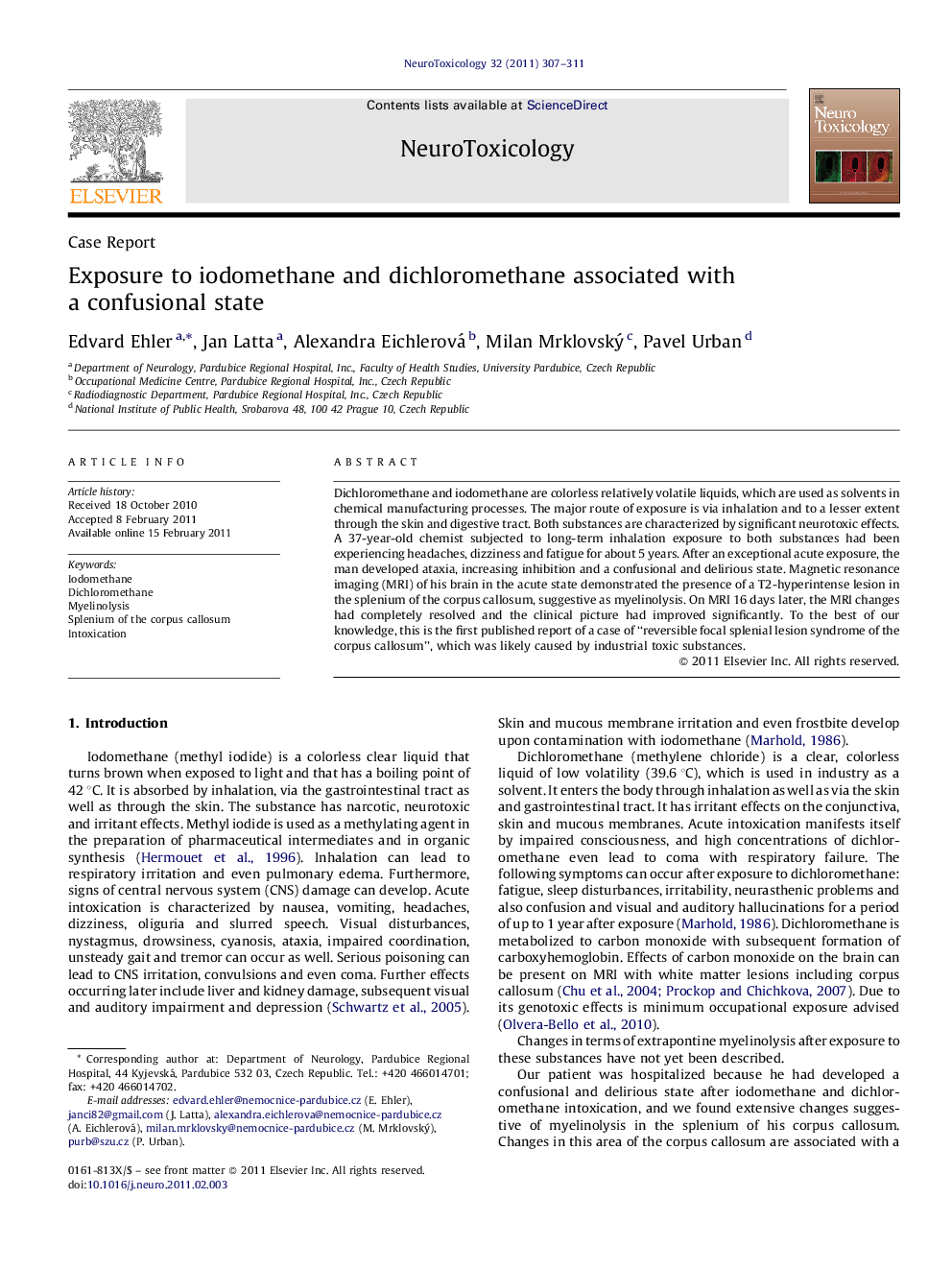| Article ID | Journal | Published Year | Pages | File Type |
|---|---|---|---|---|
| 5854992 | NeuroToxicology | 2011 | 5 Pages |
Dichloromethane and iodomethane are colorless relatively volatile liquids, which are used as solvents in chemical manufacturing processes. The major route of exposure is via inhalation and to a lesser extent through the skin and digestive tract. Both substances are characterized by significant neurotoxic effects. A 37-year-old chemist subjected to long-term inhalation exposure to both substances had been experiencing headaches, dizziness and fatigue for about 5 years. After an exceptional acute exposure, the man developed ataxia, increasing inhibition and a confusional and delirious state. Magnetic resonance imaging (MRI) of his brain in the acute state demonstrated the presence of a T2-hyperintense lesion in the splenium of the corpus callosum, suggestive as myelinolysis. On MRI 16 days later, the MRI changes had completely resolved and the clinical picture had improved significantly. To the best of our knowledge, this is the first published report of a case of “reversible focal splenial lesion syndrome of the corpus callosum”, which was likely caused by industrial toxic substances.
